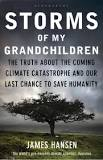Part 2 of a line-by-line examination of the claims made by Andrew Bolt in his article The death of global warmism.
Summary of Bolt’s argument in the opening paragraphs: The claims of scientists don’t stand up; they have engaged in dubious, if not illegal activities and need to be held to account.
Summary response: Andrew Bolt’s opening is a text-book example of a logical fallacy – poisoning the well. He prefaces his article with an attack on the credibility of scientists, implies their activities are both self-seeking and perhaps even criminal. He cherry picks his sources and employs a number of logical fallacies.
Logical fallacies present: Poisoning the well (x1); argument from personal taste (1); guilt by association (x2).
———
Introduction: poisoning the well
Andrew Bolt is a master of employing rhetorical devices to prejudice his audience against those he sees as his opponents – in this case scientists and those accepting the scientific consensus on climate change.
The death of global warmism opens with the (informal) logical fallacy known as poisoning the well.
He is priming the reader by preemptively attacking the credibility of scientists and ridiculing the science of climate change. A writer employing this rhetorical device will employ emotive terms, typically negative.
An example of poisoning the well would read thus:
“You may not wish to listen to the evidence of my opponent, as they have been proven time and again to be a liar and fraud”
Or:
Any claims made by person X cannot be relied upon because of Y
The following is a deconstruction of the opening paragraphs.
Bolt: “The 10 signs of the death of the scare are unmistakable. Now it’s time to hold the guilty to account.”
Response: The choice of words helps prime the audience: “scare” and “hold the guilty to account” strongly imply scientists are engaged in something illegal or morally dubious. A text-book example of poisoning the well.
Bolt: “Just why did we spend the past year paying the world’s biggest carbon tax, which drove our power bills through the roof?”
Response: There is very little evidence to support his claim – and Bolt offers none. While Australian electricity prices have been increasing, the impact of the carbon tax has been negligible. Six months after its introduction the government reported a 9% reduction in emissions from power generators. As I noted earlier, the Australian economy has not collapsed with 50,000 jobs added in the last quarter.
Bolt: “Why were our children forced to sit through multiple screenings of Al Gore’s dodgy scare-flick An Inconvenient Truth?”
Response: Bolt implies the forced watching of Al Gore’s film was a form of child abuse. He offers no evidence to support the claim it was a negative experience for children.
Bolt: “Why did we scar the most beautiful parts of our coast with ludicrously expensive wind farms?”
Response: Wind power is a rapidly growing source of energy in Australia: in the five years prior to 2011 the annual rate of growth in installed capacity grew by 35%. In South Australia wind power accounts for 21% of electricity production in the state – it is neither a marginal source of power, or “ludicrously expensive”. Bolt’s main objection appears to be based upon his own aesthetic values: however to quote the old Latin maxim “In matters of taste, there can be no disputes”.
Bolt: “And why did so many people swallow such bull, from the British Climatic Research Unit’s prediction that “children just aren’t going to know what snow is” to ABC science presenter Robyn Williams’ claim that 100m rises in sea levels this century were “possible, yes”.
Response: The quote “children just aren’t going to know what snow is” was cherry picked from an article published by the Independent in 2000. It misrepresents the words of Dr David Viner (CRU). Viner prefaced this statement by saying snowfall will become “a very rare and exciting event” – he did not claim snow would stop falling.
In 2007 episode of the ABC’s Science Show, Robyn Williams spoke about how coral reefs have helped science understand how sea level rises and falls in response to global temperatures.
He noted:
“How are ancient sea levels determined? It’s with corals. They act as bathtub rings. Ancient reefs now exposed can be dated and placed in time. Sea level has been 100m higher than present, when there were no ice sheets, and about 120m lower than present during glacial periods.”
Bolt took this to imply Williams was arguing we would see a 100m sea level rise this century. Bolt and Williams argued this point in a heated exchange on The Science Show on (10 March 2010):
Andrew Bolt: I ask you, Robyn, 100 metres in the next century…do you really think that?
Robyn Williams: It is possible, yes. The increase of melting that they’ve noticed in Greenland and the amount that we’ve seen from the western part of Antarctica, if those increases of three times the expected rate continue, it will be huge, but the question…
Williams notes it is possible that if we see warming of 3-degrees this century, we may see a significant increase in seal level rise. I will not argue whether or not Williams is correct: but I will note he is drawing his conclusion based upon the paleoclimate record.
In choosing these two quotes Bolt is employing the guilt by association fallacy – citing these as examples of poor predictions by scientists, he implies all the claims made by scientists are equally poor.
To given another example of the guilt by association fallacy:
Bob has a black beard, he also has a history of robbing banks: therefore all men with black beards are bank robbers.
Given that thousands of papers on climate change are produced every year supporting the scientific consensus, Bolt’s conclusion is as absurd as the claim all men with black beards are bank robbers.
Bolt: “Yes, we may yet see some warming resume one day.”
Response: Bolt makes a concession – warming may resume.
Bolt: “But we will be wiser. We have learned not to fall so fast for the end-of-the-world sermons of salvation-seekers and the tin-rattling of green carpetbaggers.”
Response: In this final sentence of the article’s introductory paragraphs Bolt implies scientists and activists have a hidden agenda: either converting people to a set of beliefs (salvation-seekers) or venal self-interest (green carpetbaggers).
This is a variation of the climate sceptic myth that scientists are perpetrating a hoax for funding, while green activists are employing the global warming “scare” to destroy capitalism and usher in a one-world-government.
It is yet again an example of the guilt by association fallacy.
Next: Part 3, Andrew continues to claim the world isn’t warming despite the overwhelming evidence.





